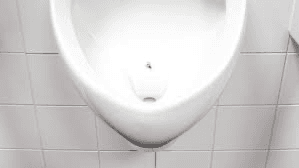
Indoor signs

3/29/2024
Jos and Aad worked as managers at the Schipol International Airport in Amsterdam. They noticed that there was a significant amount of spillage around the urinals in the men's washroom requiring additional cleaning resources. They decided to try little experiment and etched small flies in strategic locations in the urinals -- encouraging users to aim at the centre of the urinal. The results were remarkable: spillage reduced by 80%, and overall toilet cleaning budget declined by 8%.
Richard Thaler wrote about the fly & the urinal experiment in his book, Nudge: Improving Decisions About Health, Wealth, and Happiness. In his book, he talks about how small cues can have psychological impact that influences our decision making and changes our behaviour. The book became a New York Times bestseller and Richard Thaler won a Nobel Prize in Economics.
The "Fly in the Urinal" story illustrates how signage can leverage psychological principles to achieve practical outcomes in real-world settings. Signs communicate beyond words and influence our behavior, perceptions, and interactions with the environment. A wall mural in a work environment, can increase employee productivity. Window graphics on a retail storefront can reduce breakins and theft. Universally recognized washroom symbols can transcend language and set the stage for a comfortable, safe and inclusive washroom experience for all.
Visual elements used in sign design -- such as colour, shape, typography, and imagery -- influence human perception, cognition, and behavior.
If you would like to learn more about psychology of 'nudges' - pick up a copy of Richard Thaler's book, Nudge. If you'd like to learn more about signage, drop us a line!
We're always happy to help!
Best,
Emma and Dan